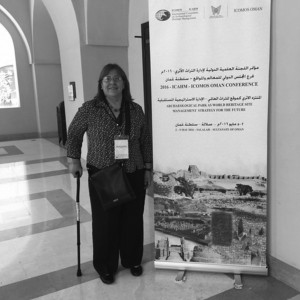One of the greatest attractions when visiting Mitla is the varied architectural decoration of the archeological zone’s symmetrical, substantial buildings. This decoration consists of a combination of several elements, including the molding known as “scapulary panel,” consisting of horizontal bands of smooth stone with a few changes in depth, and elements that seem to hang from the corners and in the central areas of certain long walls, or next to entrance openings.
These movements in the panel molding allow gaps to be left between the hanging elements (and inside some of them), which are filled by ornamentation in the form of meander patterns of the most varied designs and different kinds of execution. Some are mosaics assembled from small pieces, forming every feature in the meander pattern; others consist of larger pieces that take up a greater portion of the meander pattern; whilst others are carved in relief in long stretches on very large monolithic pieces, such as the lintels.
For some, these meander patterns are quite simply a synonym for Mitla. However, Mitla is more than just these exceptional panels decorated with meander patterns. The panel itself comes from the influence of Teotihuacan, which spread throughout Mesoamerica in approximately the first five or six centuries of the current era. This ornamental motif comes into its own in Monte Albán, where the molding is doubled and incorporates hanging motifs, but Mitla is where it achieves its greatest level of refinement. It is constructed from perfectly cut and assembled cantera ashlars, whose corners are always finished in a very satisfying manner, highlighting the hanging element without taking away from the meander pattern friezes accommodated within the panels.
Mitla’s meander patterns always form friezes, and the motifs they comprise are very varied, only being repeated occasionally. Consisting of small pieces of perfectly assembled pieces of carved cantera, as mosaics, or carved in very large pieces, they combine with other similar patterns or with different motifs to form very visually attractive shapes of the highest level of decorative quality. These effectively contribute to highlighting the hierarchy of the buildings they appear upon, as well as that of their original occupants.
As regards the origin of this type of decoration, scholars have identified similar motifs in the decorative arts (ceramics and precious metalwork), the codices and the architecture of the Mixtec-Zapotec culture in the Valley of Oaxaca. Originally, all the meander pattern friezes were finished with a thin layer of whitewash applied to the red-painted stone, and some small portions of the original finish can still be seen on some friezes. There is evidence that several of the large monolithic lintels in the North and Stream architectural groups were originally decorated with ornate mural paintings of the same type as the Mixtec codices. Unfortunately, although small fragments of these paintings remain, most of this decoration has been lost.







